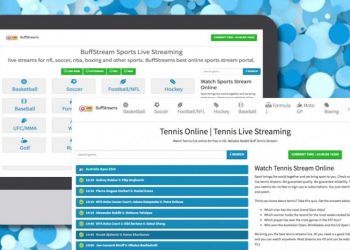We all exist online. Whether you like it, social engagement, shareable content and visibility in the Google search results pages determine overall sales performance.
Social media is where it’s at and the best thing you can do is pay attention as early as possible.
The simplest way to explain social media listening would be to compare it looking at puzzle pieces and asking yourself what’s the bigger picture. Marketers collect data on a brand’s social media activity whether it’s quantitative (number of likes and shares) or qualitative (what type of mentions a brand receives online), and then use it to create new marketing strategies.
How to use it as an advantage for your business?
Perhaps the biggest strength of social media listening is that it’s relatively cost light to perform, but has a disproportionately high ROI. Intrinsic to marketing, social media listening yields results applicable in every decision making process.
You’ll find the necessary resources to…
Are you on the right social media platform? Are you targeting the right customers? Are you using the right language? Successful social media strategies require accurate targeting and the answers are online and free. Your audience tells you exactly what you need to know. All you have to do is look for the right keywords in order to pinpoint exactly what works over a longer period of time.
Measure your performance
Hard data stands between you and generating sales. What is the content that gets people excited? What is the engagement level with a branded hashtag? How did your campaign perform over time and how did it translate to sales?
Social media listening gives you valuable benchmarks for your current performance and areas for improvement. Don’t forget comparing against competitors and rate the effectiveness of their campaigns as well.
Product development
Products should not be static – they have to evolve alongside customer needs in order to remain as relevant as they are today. It’s quite natural for a product or service to lose its luster over time and new competitors always lie in wait to edge you out of your market niche. Through social listening you have your ear to the ground and pay attention to product shortcomings and strengths, feedback on packaging and overall design.
Customers will tell you all you need to know about your product, and social media is a fine place to recruit test subjects to try out new product prototypes. Every industry has its influencer and every brand has its loyal customers who can easily become brand ambassadors and whose passion can be channeled into revenue generation.
Better brand reputation
Forewarned is forearmed. Advice that will do you well to heed in any business capacity, but truest when it comes to brand management. Social listening points you in the direction of conversations about your brand. How is your brand name mentioned by customers, rivals and the press? Do you have some concerns about messaging and reception?
The Internet will tell you all about it; what you’re doing well and where you’re failing. It’s your job to take action where necessary and improve your social standing.
How can an RSS feed reader help you with that?
RSS feed readers excel as tools for gathering information. Best suited for articles, think pieces and news items, RSS readers syndicate content from as many sources you need. Expand or shrink the scope of your research as you see fit to accomplish what you need. Coupled with customization and integration features, RSS readers make for the perfect auxiliary tools to strengthen your social media listening practices.
What’s more current RSS readers support social media. Inoreader can tap into Twitter, Reddit and YouTube easily, and that’s just the built-in support.
Reach out to your customers easier
RSS works as a way to disseminate content easier to customers as well. It’s a sound decision to have RSS feeds for your site and blog so you can reach a wider set of your target audience. That’s one way to think about RSS as useful for your brand.
However, RSS readers used with social listening highlights the social interactions worth your time and effort. Brands should very much maintain open communication with their customers.
Discover what interests them
You can’t sell anything unless you understand your audience, and it bears asking – “Do I know in great detail what makes my customers tick?” A basic buyer persona does only so much to spark a connection with your target audience. Social listening builds long-lasting bridges by identifying key aspects of your ideal customer.
What is their relationship to the type of products you sell? What motivates them to buy? What are their values and their language? What are the keywords and phrases they share in common as a means to reach them? Where do they spend their time online?
Receive feedback
Traditional communication channels have ceded their place to social media, which now assumes the role as the leading customer service platform. Because of the intimate nature of social media, customers turn to their profiles to detail their complaints or praises.
Some will tag the businesses in question, but otherwise brands have to search for feedback and respond to it. Customer support can make the difference between a repeat sale and a lost customer.
Find new customers
Social media listening, especially when you’ve set your sights on non-branded keywords, leads you to customers who are sourcing recommendations about your product category or express their needs, which you as a brand can meet. This is an excellent opportunity to take the cue and enter the conversation able and willing to help out.
Such reach-out also works when addressing customers of a rival brand, who are dissatisfied and left without any meaningful resolution. Customer poaching might be frowned up in polite society, but there’s no denying its efficacy as such customers are already primed for a sale.






